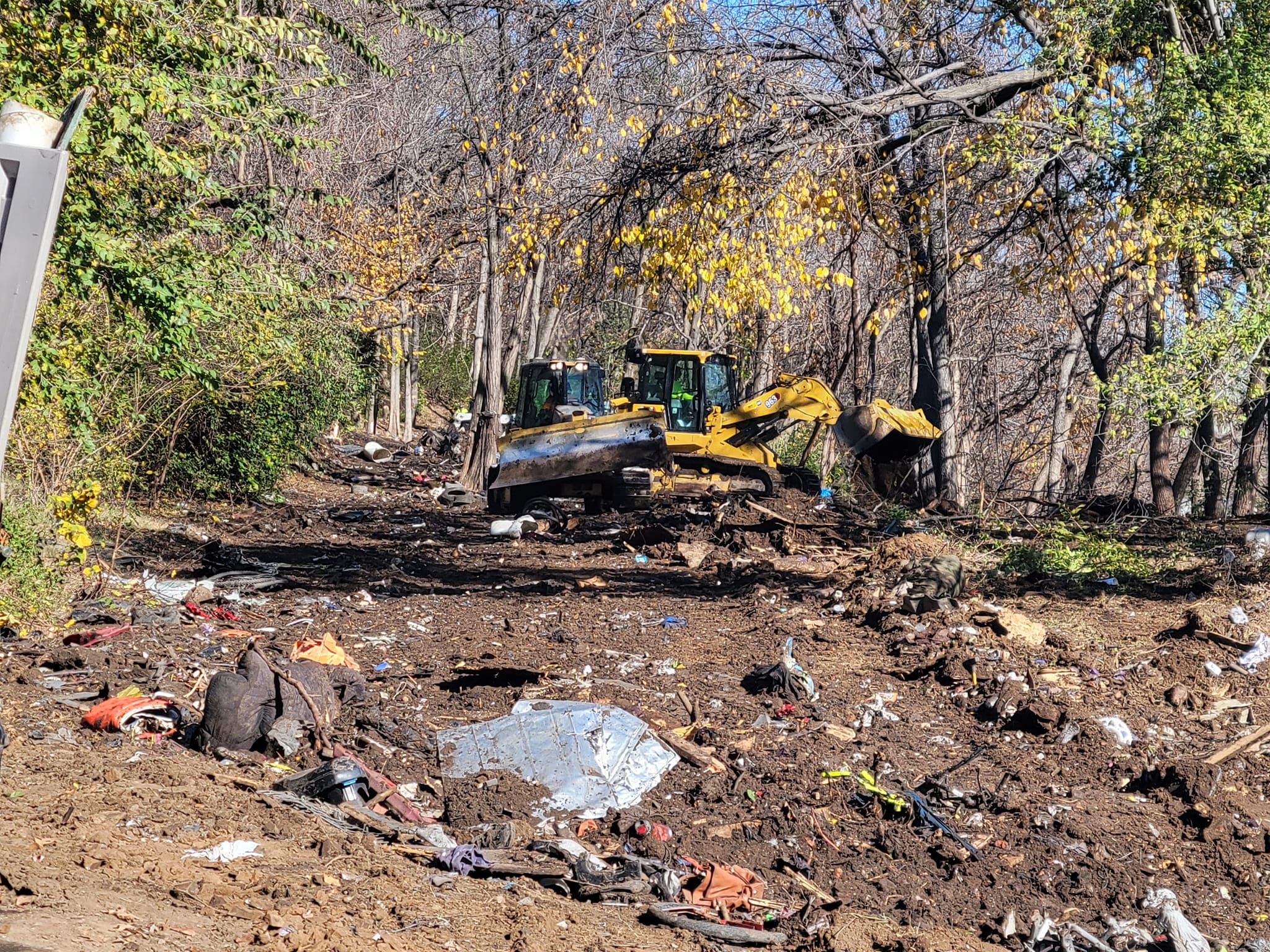
By Mili Mansaray, The Kansas City Beacon
Three years ago, Brian Haimowitz slept behind buildings and under bridges because he couldn’t afford a place to stay with the money from his job as a cashier at a local Wendy’s.
He said he tried to get help through Kansas City’s shelter system, but he was quickly turned off by roadblocks he encountered.
One shelter told him it required guests seeking admittance to its dormitory to check their phones and electronic devices. Though the rule was created to protect the privacy of clients, it was a deal-breaker for Haimowitz. He was on parole at the time.
“I even told them, ‘I’m on paper right now. I have to have my phone on me because if my parole officer calls me and I don’t respond, I can get in trouble,’” he said.
“We’re not in prison or jail. We’re men or women who need a bed.”
Unable to follow the shelter’s rules, Haimowitz slept on the street. He eventually found a place to sublet, but he lost it in May. He’s been living outside ever since.
Haimowitz’s experience points to a gap in Kansas City’s network of resources for people who lack stable housing. Service providers — and unhoused people themselves — say the city has no shelters with minimal requirements for entry.
When city leaders last year drafted Zero KC, an ambitious plan to end houselessness, addressing that absence was listed as a top priority. Although it is still trying to raise funds toward that goal, the city is preparing to seek proposals from organizations to run what’s called a “low-barrier” shelter.
“We don’t even have a low-barrier shelter, so we can’t even begin to talk about what success looks like if we don’t have the basics,” said Josh Henges, the city’s houseless prevention coordinator. “The first stage of success we need to be on track is to create the infrastructure that is needed in Kansas City. We’re 10 years behind a city of our size.”
The low-barrier difference
The latest published point-in-time count by the Greater Kansas City Coalition to End Homelessness found 1,582 unhoused persons were identified in Jackson County over a 24-hour period in January 2022. Of those people, 711 were not staying in a shelter. Because the count only includes people who were surveyed, providers think the actual number of people living on the streets, in vehicles and in campsites runs much higher.
Many local shelters focus on transitional housing, a stopgap between houselessness and stable housing. Most transitional housing programs require sobriety, for example, and participation in things like job training, addiction recovery and life skills classes.
Transitional programs provide a path to long-term, stable housing, Henges said. But he said shelters that provide safe places for people without layering on too many conditions are needed, too.
“Low-barrier shelter,” Henges said, “is the front door.”
Zero KC is based on a housing-first model, which prioritizes getting people off the streets, out of camps and into stable housing as quickly as possible.
“People need necessities like food and a place to live before attending to anything less critical, such as getting a job, budgeting properly, or attending to substance use issues,” the drafters of Zero KC said in their report. “Shelter, however, in and of itself, is not a solution to homelessness but rather, a lifesaving intervention for any person in a housing-related crisis.”
What are the barriers to Kansas City shelter?
A frequent complaint among unhoused people in Kansas City is that existing shelters may require them to participate in religious activities or part with belongings or pets.
“At a lot of the shelters, people have to give up everything,” said Alina Heart, a six-year volunteer with KC Heroes, a nonprofit that provides support to unhoused residents. “If they don’t have a long-term plan, they actually end up worse because they’ve given up all their camping supplies,” she added.
Tamika Roberson, who has been homeless, has run into issues at shelters that don’t allow pets.
“I have an emotional support animal, and animals aren’t allowed in the shelters,” she said.
And Haimowitz, who sleeps outside, said he balked at the “local church involvement” required by a shelter he stayed at.
“You’re either forced to believe what they want,” he said, “or leave.”
Shelter KC, a rescue mission near downtown Kansas City, offers 60 emergency beds in its emergency shelter for men and plans to add 30 more in October.
Shelter KC’s website says guests in the shelter are offered a chance to participate in C-COR, or Christian Community of Recovery, a program for people experiencing substance use disorder.
After two weeks, they are invited to the Shelter Launch program, which connects guests with a life coach to work on issues leading to permanent housing, such as health, employment and unraveling legal issues.
Rules for entry vary among shelters in Kansas City. For example, Shelter KC will allow people without identification or people who have sex offender convictions to stay. But it does not allow people under the influence of drugs or alcohol in the building unless the weather is life-threatening.
Eric Burger, Shelter KC’s executive director, said he agreed on the need to provide emergency shelter without onerous restrictions. But low-barrier shelter alone isn’t an answer, he said.
“One of the challenges is that low-barrier becomes the endgame, but as soon as the weather is nice everyone gets back into the camps,” Burger said. “How do you accept people where they are but also challenge people to go to the next step?’
He added: “Low-barrier is important, but there must be an ability to transition people in some way or another. We want to have that open door but we want to encourage you to make changes in your life, otherwise you’ll repeat the cycle.”
How does Kansas City plan to address low-barrier shelter needs?
Low-barrier shelters have been a source of dispute in Kansas City. Last year, the City Council’s finance, governance and public safety committee rejected a proposal that would have allowed the city manager to determine the cost of one or more of them. But city leaders now say low-barrier shelters are back on the table.
“Ultimately, the city’s goal is to partner with an agency that will allow us to create an emergency shelter that has limited barriers,” said Ryana Parks-Shaw, the 5th District councilwoman and chair of the city’s houseless task force.
City officials applied for federal grants and received $8.3 million from the U.S. Department of Housing and Urban Development’s HOME Investment Partnerships American Rescue Plan Program. Of that funding, $4.8 million has been set aside to construct a low-barrier shelter, to be completed by next year at a site yet to be determined.
Henges said the HUD money won’t fund all of Kansas City’s emergency shelter needs but called it a good first step. Ultimately, the city, state government and HUD will need to come together and find creative ways to fund this project, he said.
In August, Kansas City released a request for proposals to find a low-barrier shelter provider, Henges said.
The goal of Zero KC is to have a greater number of people securing stable housing than those who are unhoused.
“Once the infrastructure is in place, there could be a rapid decline” in houselesness, Henges said.
This article first appeared on The Kansas City Beacon and is republished here in partnership with the KC Media Collective.

















